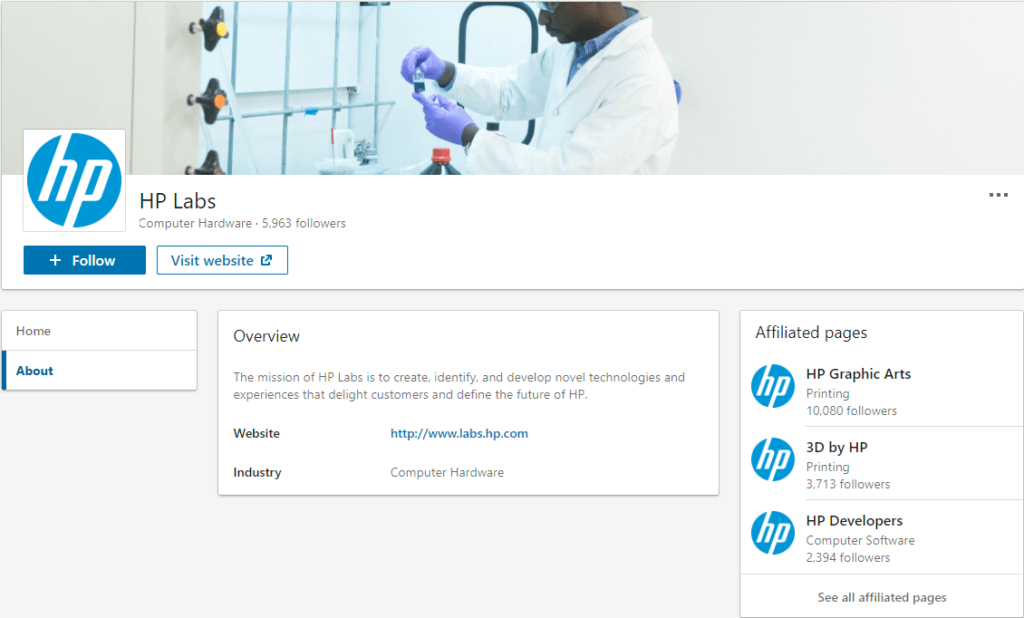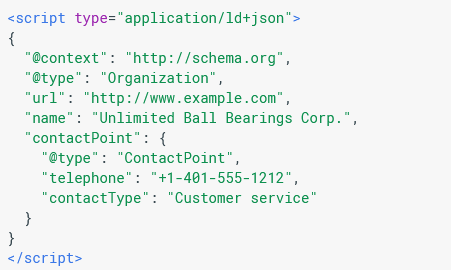Ask most people and they will tell you that Google uses algorithms, not humans, to help “rank” websites. Although they are right about Google using algorithms, thousands of Google employees train those algorithms. In the end, these people have a profound impact on the results we see when we search on Google.
Before we dive into the 13 most important things you should know about Google’s search quality raters’ guidelines, let’s look at the fundamental reason that Google needs more than ten thousand full-time employees physically looking at websites like yours.
The Purpose of Google’s Search Quality Raters
The purpose behind these guidelines is to ensure users get high-quality results for every search. In order to do this, Google has hired a small army to manually rate the quality of search results.
As the digital marketing landscape continues to evolve and mobile devices become more popular, search quality raters have begun to increasingly emphasize mobile searches, compared to their earlier focus on content creators and site reputation.
Google has developed a strict process that helps ensure raters conduct their jobs in the most efficient way possible. Here’s what you need to keep in mind when building your site.
What Does a Google Page Quality Rater Do?
Page quality raters have the important task of making sure that top search results deliver what a searcher actually wants to find. But what does their job entail, and how can you leverage the knowledge of what they are looking for to your brand’s advantage?
Google Search Quality Raters follow this six-step process that helps them review and rate search results:
1. They Ask Questions
At this stage, raters ask initial questions about the landing page they are tasked to look at. These questions are designed to better allow raters to judge the quality and utility of the page.
2. They Record Their Observations
Next, raters will record their observations on landing page quality and characteristics. This documented information is key to updating algorithms.
3. They Check the Site on Mobile Search
Remember, these raters are increasingly focused on mobile searches. Because of this, the third step in their process is to run the same search on a mobile device and rate the quality there as well.
4. They Consider Website and Creator E-A-T (Expertise, Authoritativeness, and Trustworthiness)
The fourth step in the process is a very important one. It is here that raters will determine a website’s and its creator’s reputation by evaluating their Expertise, Authoritativeness, and Trustworthiness.
5. They Rate the Page
Now, raters officially record their overall page quality rating on the rating sidebar.
6. They Explain Their Rating
Finally, raters leave a comment explaining their rating to others, so that they can come to a consensus. This allows for accurate adjustments to Google’s algorithms.
With this in mind, let’s take a closer look at the 13 things you should know about Google Search Raters Guidelines.
13 Items Google Search Quality Raters Use to Rank Websites
The following 13 items provide a brief overview of the most important items you should understand about the process. All 13 items are condensed from Google’s comprehensive 164-page document titled “Search Quality Evaluator Guidelines”.
1. Page Quality
In essence, the page quality rating will determine how well your page meets its purpose. As long as you are meeting this standard and your page is serving the purpose that you’re saying it’s for, your page will not be negatively rated with one exception.
Google search raters assign the lowest page quality rating to sites that are created to harm or deceive users in any way.
2. Your Money or Your Life (YMYL) Pages
The majority of websites are separated into two distinct categories by Google’s raters: “Your Money” or “Your Life”, also known as YMYL.
This distinction is important: these pages are scrutinized more heavily than others because they can potentially influence a user’s life. Examples of these pages include those that deal with:
- Shopping or finance (Your Money).
- Financial information (Your Money).
- Legal information (Your Money).
- Medical information (Your Life).
- Pages dedicated to user safety (Your Life).
- News or public/official information (Note that all news articles are either YM or YL).
If your site is geared toward any of the above areas, it’s especially important that you take the time to optimize it for Google’s Search Quality Rater Guidelines. By doing so, your page’s ranking won’t be penalized because of increased scrutiny.
3. Page Type and Purpose
In addition to YMYL pages, there are page types. These pages are ones that:
- Share information about specific topics (i.e. a blog).
- Share personal or social information (i.e. Facebook).
- Share pictures, videos, or other media (i.e. YouTube).
- Entertain (i.e. Netflix).
- Allow users to post and answer questions (i.e. Yahoo! Answers).
- Allow users to share and download files and software (i.e. CNET).
Understanding which category your webpage falls under can help you tailor your content to achieve better search rankings.
4. E-A-T (Expertise, Authoritativeness, and Trustworthiness)
If you want your website to score well on its Page Quality score, you have to consider E-A-T.
E-A-T refers to the expertise, authoritativeness, and trustworthiness of the webpage, the main content, and the webpage’s creator.
Individuals and sites who score highly on all three will enjoy high Page Quality rankings.
Let’s take a look at some good E-A-T examples to see how it can be used to determine final rankings:
- Professionally-Produced Journalism: High-quality news enjoys higher Page Quality rankings. These pages have journalistic integrity and can accurately inform the reader of important information.
- Medical Advice from Medical Professionals: If you make a page that offers medical advice, make sure that you’re a medical professional. Google’s search raters will provide low scores to sites and pages that offer medical advice from individuals with no medical training.
- Legal and Financial Advice from Experts: Likewise, if you give legal or financial advice, make sure that you’re also qualified to do so. Because these topics are considered YMYL, they’ll be under especially-heavy scrutiny—as will medical advice.
- Hobbies: If you’re teaching users how to ride a skateboard, make sure that you know how to do it yourself.
In short, be sure you have the appropriate credentials to post your content with Expertise, Authoritativeness, and Trustworthiness.
5. Content Quality
In addition to webpage content, it’s important to understand the different parts to a webpage.
These parts are:
- Main Content (MC): The reason you made the webpage in the first place, which is one of the most important determinants of the final Page Quality rating.
- Supplementary Content (SC): Content that either adds or detracts from the page’s MC (ex. the site’s navigation tab).
In order for content to score highly, it needs to be relevant and fresh for users. This will help better position it in the final rankings.
Some content, for instance, might require that the information be recent. If your page isn’t up-to-date in this area, it won’t be awarded a “Needs Met” rating.
Other webpages may not have the “newsy” or fresh intent behind them. In this case, they may be more targeted at those looking for “timeless” content.
Finally, if you stop updating your webpage or have inaccurate information on it, be prepared to be slapped with a low E-A-T rating.
6. Finding Website Information
Website information shouldn’t be hard to come by.
The different pages on your site should be clear. If you have two homepages, raters will only rate the one that has the most relevant information on it, so be mindful of this as you develop your site. Additionally, raters should quickly be able to tell who made the website and who created the page’s content.
7. Reviewing Website Reputation
It’s nearly impossible to get a high Page Quality rating if you don’t establish a good reputation. For this reason, it’s important to understand the criteria that determine how your reputation is calculated.
Your reputation will depend on user experience, as well as the professional opinions of those who have expert knowledge of your topic. The more accurate it is, the better.
Raters will also look for outside information about the website. This may include references, reviews, and expert recommendations regarding your site.
8. Page Quality Guidelines for Mobile
It’s important that mobile users have quick and convenient access to their content. If your page doesn’t provide this, it will suffer in quality rankings.
Make sure that your page meets the following standards:
- Easily adaptable to different mobile screen sizes.
- Mobile versions are easy to use on the phone.
- Users with slow internet connections aren’t overloaded by your webpages.
- Data, such as login or card information, is easy to enter.
9. Classifying and Understanding Queries
It’s also important to recognize that users conduct searches with specific intent, and you can get a higher rating if your page directly answers one of these queries.
These include the:
- Do Query: Users want their phones to perform an action.
- Know Query: Users are attempting to find information regarding a specific topic.
- Website Query: Users are attempting to find a specific website.
- Visit-in-person Query: Users are looking for a business or location in their area.
Additionally, many users enjoy the process of virtual window shopping.
In order to get a high Needs Met rating, sites must funnel users through proper research and browsing on their customer-user journey. This higher-funnel information should come from a reputable source, especially for products that can dramatically impact one’s quality of life, like home remodeling.
10. Local Search Queries
Mobile searches have impacted the way users make search queries. Determining locale is crucial to making a more appropriate interpretation of a user’s query. Smartphone searches have increased the number of “do queries” and the importance of understanding a resident’s location.
For example, a user based in the UK may expect a different result for the term “football” than a user based in the US. Or, if a person uses the voice command “Coffee shop near me”, Google will need to pull up the closest coffee shops to that phone.
11. Establishing Correct Query Interpretations
It’s common for a query to have a meaning that is different than what shows up on Google’s search pages. Google categorizes these as Dominant, Common, or Minor Interpretations.
Dominant Interpretations are what most users mean when typing a query. Common Interpretations are what many users would expect to find from a query, while Minor Interpretations are sought by comparatively fewer users.
For example, a Dominant Interpretation of the query [apple] would be the company, Apple. A Common Interpretation would be the fruit, apple, and a Minor Interpretation could be the name of a place in the US: Apple, Oklahoma.
12. Needs Met Rating Guidelines
A page’s Needs Met rating is directly influenced by its ability to help mobile users.
Consider the following guidelines for Needs Met ratings:
- Fully Meets (FullyM)—Most, if not all, users are immediately satisfied with your page. This means they won’t have to look at another to get their needs met.
- Highly Meets (HM)—Users who go to these sites have been helped, but they likely would want to see additional results from another source.
- Moderately Meets (MM)—This may be helpful for some mobile users, or many users in general, but there are many who want to see additional results as well.
- Slightly Meets (SM)—Pages that meet this standard are helpful, but they aren’t directly related to the query in question. Because of this, most users will likely want to see additional results.
- Fails to Meet (FailsM)—The needs of the users are not met, and they will seek another source for more information.
13. Overall Page Quality Rating
Once the important factors above are all computed, the page will receive a final rating.
Final ratings are outlined below:
- Highest Quality Pages
Highest quality pages deliver definitive benefits. Their pages are clear with ample amounts of MC that fully support the page’s purpose. All necessary information is transparent and easy to find. Furthermore, the page’s reputation establishes very high Expertise, Authoritativeness and Trustworthiness.
- High Quality Pages
Pages have a clear purpose which is effectively outlined to users. Information satisfies users and they are not compelled to search other sites. A good reputation and a high E-A-T are established.
- Medium Quality Pages
These pages are satisfying to most users and deliver on their purpose moderately well. Their E-A-T and reputation aren’t as high as others, but they still provide accurate information that readers can trust. These pages may be lacking in MC when compared to others of a higher quality.
- Low Quality Pages
Low Quality Pages fail to deliver on their purpose. These pages have a good intent but poor reputation and low E-A-T. Main content is lacking, and the site’s information may be difficult to locate.
- Lowest Quality Pages
These pages are intended to do harm to others. Pages that promote violence, theft, or deception of any kind fall under this category. Their E-A-T and reputation are rock bottom.
Ok, so now you’re an expert. What’s next?
It is important to consider the above factors when building your webpage. In order to ensure a high page rating, you need to make sure that you have:
- A clear page purpose that is delivered upon.
- Title tags and Meta descriptions that clearly outline the landing page.
- Expertise, Authoritativeness, and Trustworthiness (E-A-T) in your topic.
- An ample amount of high-quality Main Content.
- Information about the site and the creator of the MC in an easy-to-find location.
- A strong author reputation, as well as a high website reputation.
With this in mind, it’s important that you start optimizing your webpages right away. Have you noticed any potential ways to improve your site? Don’t wait to implement those changes, because if you don’t, your competitors will!
If you’re feeling stuck and don’t know how to give your website the boost it needs, feel free to reach out to us here and subscribe to our newsletter for industry trends and important insights delivered to your inbox.





